The basic skills of all drivers should include inflating and deflating tires. It is not ideal to drive with under or over-inflated tires. Also, this skill comes in handy if you need to flatten a tire for storage or whatever legal reason there is. But do you know how to flatten a tire quickly and safely?
Here’s how to flatten a tire fast:
Read on to learn more about the steps for deflating your vehicle’s tire fast, including the tools you will need to get the job done.
If you want to know how to flatten a tire fast, here’s how:
You don’t need too many tools to get this job done. You need a valve core tool or a pair of long needle-nose pliers.
Let’s briefly talk about each step to flatten your vehicle’s tire quickly and safely:
To flatten a tire, you first need to locate the tire’s valve stem. The valve stem refers to a self-contained valve that opens to allow air to enter the tire’s chamber.
Once an air pump is pushed in, the valve stem opens. Then, it automatically closes once you remove the pump. It is vital in sealing the air inside and preserving the tire’s pressure.
The valve stem looks like a small tube and is often made of rubber and metal. It is not hard to locate it as it protrudes from the tire.
There are instances when the valve stem has a cap. You have to remove it to deflate – or even when you inflate – the tire. You can remove it by twisting it in a counterclockwise manner.
The second step is to identify the metal pin. It is a movable, spring-loaded pin attached to the valve stem seal.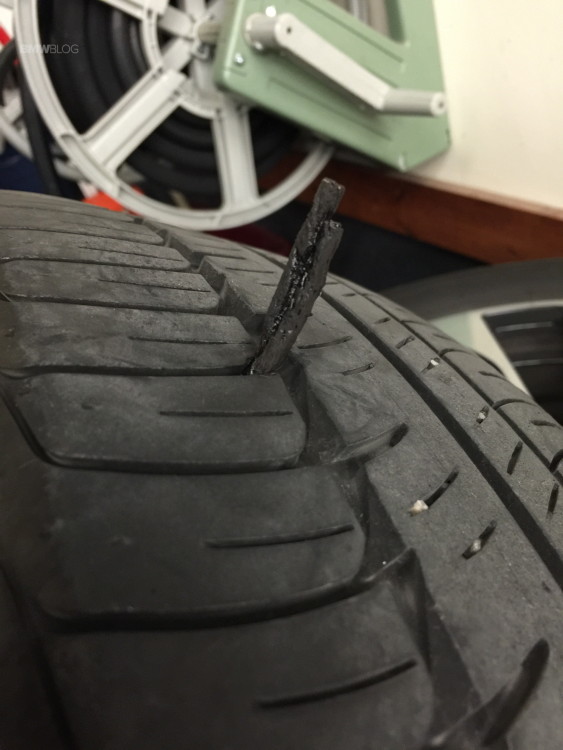 It will let out air and deflate your vehicle’s tire if you push it in. But if you want to deflate and flatten your tire quickly, you can completely detach the pin from the seal.
It will let out air and deflate your vehicle’s tire if you push it in. But if you want to deflate and flatten your tire quickly, you can completely detach the pin from the seal.
If you want to deflate some air out of your tire, you can use any stiff tool that is small enough to push the pin in. The most common tools used include a screwdriver or the backside of a pressure gauge.
Others also use a key, a belt buckle pin, or even a hard shoelace tip. Press the pin harder if you want the tire to release more air.
Remove the pin entirely if you want to flatten your tire fast. Use a valve core tool or long needle nose pliers to do this. Hold the pin and carefully twist it counterclockwise.
As you do this, air will start escaping the tire. Just continue twisting the pin until it detaches from the seal.
Once the pin detaches from the seal, remove the pin and be careful not to lose it.
With the pin removed, your tire will continuously release air.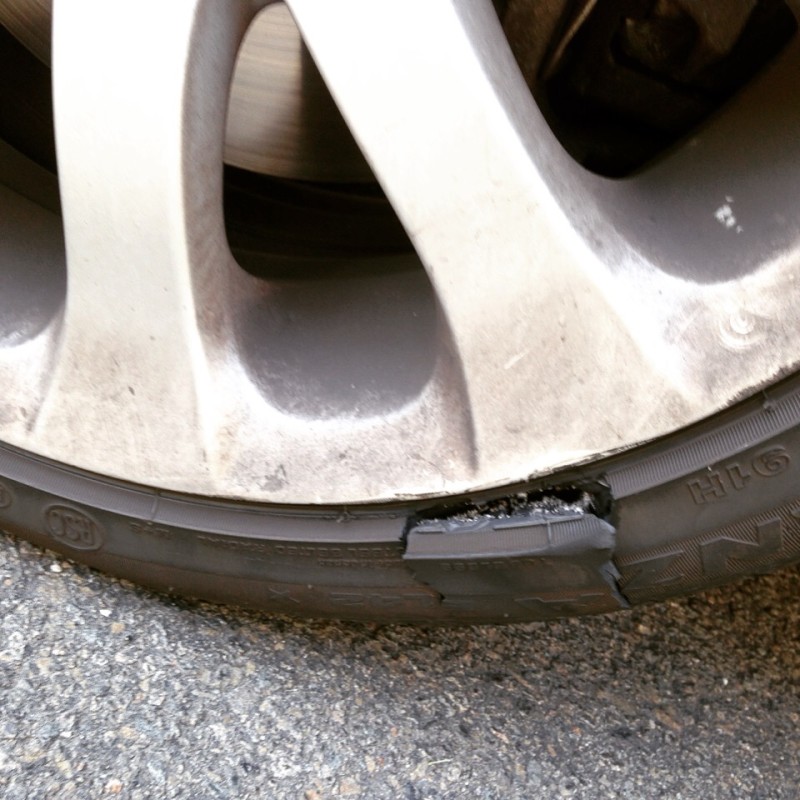 This way, you don’t have to manually press the pin for a long time until the tire releases enough air. Doing so can stress your hands as you need to press the pin hard.
This way, you don’t have to manually press the pin for a long time until the tire releases enough air. Doing so can stress your hands as you need to press the pin hard.
Now, all you have to do is wait for your tire to flatten.
If you do not want to flatten your tire 100%, there’s nothing to worry about. You have to put the pin back in the valve stem and attach it to the seal. You have to twist it again, but this time, do it clockwise.
Continue to do so until you are sure that you have completely sealed it back. If the valve stem has a cap, you have to put it back.
What to Do If You Get Flat Tire at Night
If you want to flatten your tire 100%, wait until all air is released from the tire. Once it is done, place the pin back to prevent misplacing it. Do not forget to place the cap back, too, if it has one:
In this video, Mike from 1A Auto shows us how to release air from the tire quickly and safely.If you slash a tire using a knife, your tire will indeed flatten in seconds. It will create a loud “psshhh” sound if you do this to a regular pressurized tire. The slash rushes out air at high pressure, quickly flattening your tire.
If this is how you want your tire disposed of, you have to use a sharp and serrated knife. You have to do this with extra caution because of the sharp knife and how the air rapidly rushes out of the tire.
To do this, make sure to secure the tire between your legs while you are standing. Do not force a hard slash right away. Instead, make small radial cuts on the tire’s sides.
Instead, make small radial cuts on the tire’s sides.
After several cuts, make sure to face away before you push the knife hard into the cuts you made. Once enough deep cut through the sidewall, air will rush out of the tire.
Again, make sure you face away once you have made several minor cuts. Most importantly, continue facing away when you make a deep cut. The last thing you want to happen is a big gust of air bursting in your face. Unfortunately, this can cause an injury.
Using a knife is a fast method to flatten your tire. It can even be faster than flattening the tire by removing the pin, but it depends on how big the cut you have made on the tire.
While this is a fast method that you can do, the disadvantage is that you will not be able to use the tire anymore. Suffice to say you can do this if you plan to dispose of your tire completely.
But if you plan to flatten your tire for storage, removing the pin is the recommended approach. It is also a safer method, even if you plan to dispose of it too.
Again, how to flatten a tire quickly and safely? To slash a tire quickly, use a sharp and serrated knife. A sharp knife can easily slash the tire’s surface as long as you apply enough force.
Slashed Tire vs. Blowout Tire
Using a nail may be another way of flattening your vehicle’s tire. However, this is not a fast way to do so unless your nail is strong enough to make a big deep cut.
Accidentally running on a nail is one of the most common flat-tire causes. Typically, the air escapes slowly from the tire. But your tire can suddenly burst, especially if it is already worn out. Unfortunately, this situation can be risky.
If you want to flatten your tire using a nail, use a nail not shorter than 3 inches.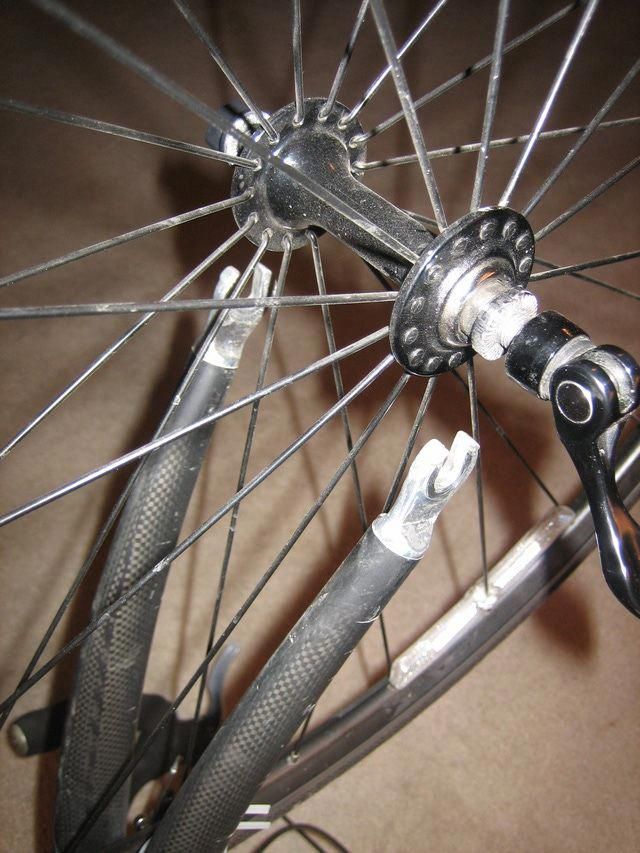 Securely place the tire between your legs and start hammering in the nail. Make sure to lean back as far as you can while doing this. So that just in case the tire suddenly bursts, the air will not explode in your face.
Securely place the tire between your legs and start hammering in the nail. Make sure to lean back as far as you can while doing this. So that just in case the tire suddenly bursts, the air will not explode in your face.
While this is another way of flattening the tire, it may not be as fast as simply removing the pin from the valve stem. Besides, it can be risky, too, as it can cause an injury.
What to Do When You Find a Nail in Your Tire
Here are some frequently asked questions related to a quick way to flatten a tire:
The fastest way to deflate a tire is by screwing the metal pin from the valve stem. Use a pair of thin long needle nose pliers to secure the metal pin. Turn the pin counterclockwise to detach it. As you twist the pin, air will slowly escape from the tire.
Once you completely detach it from the valve stem, the air from the tire will release fast.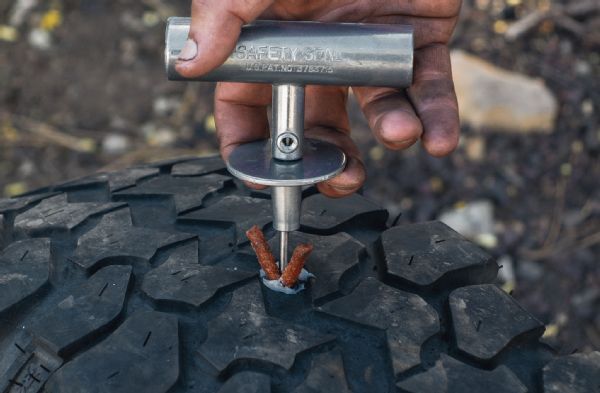 You can get the job done quicker than if you press the pin down.
You can get the job done quicker than if you press the pin down.
It is easy to make a tire flat using a nail if the tire is already old and worn out. In some cases, a nail can only pierce the tire’s surface but not deep enough to reach the rubber fabric.
You can use the back end of the air gauge to push the metal pin of your tire. Alternatively, you can use a key or a belt buckle pin to push the metal pin down to let the air out. In essence, you can use any stiff tool that is small enough to push the pin down effectively.
Use a sharp and serrated knife to flatten your tire. Make small radial cuts on the sides of the tire before making a deep cut through the sidewall.
However, make sure to lean as far back as you can while doing this, or turn your face away as much as you can. This way, the air will not suddenly burst in your face, which can cause an injury.
You can still deflate your tire even if you don’t have a valve core tool or a pair of long needle-nose pliers. You can use any stiff object small enough to press the tire’s metal pin. It can be a belt buckle pin, a key, or a hard shoelace tip.
It is possible to slash a tire with a screwdriver. However, you might have to exert a lot of effort. A screwdriver is not sharp enough to quickly make a deep cut through a tire.
Slashing a tire can be loud, especially if the tire is not depressurized.
The easiest way to flatten your tire is by detaching the metal pin from the tire’s valve stem. You will need a valve core tool or a pair of long needle-nose pliers to hold the pin. Twist until the pin completely detaches from the valve stem’s seal.
This will allow the air to escape from the tire quickly.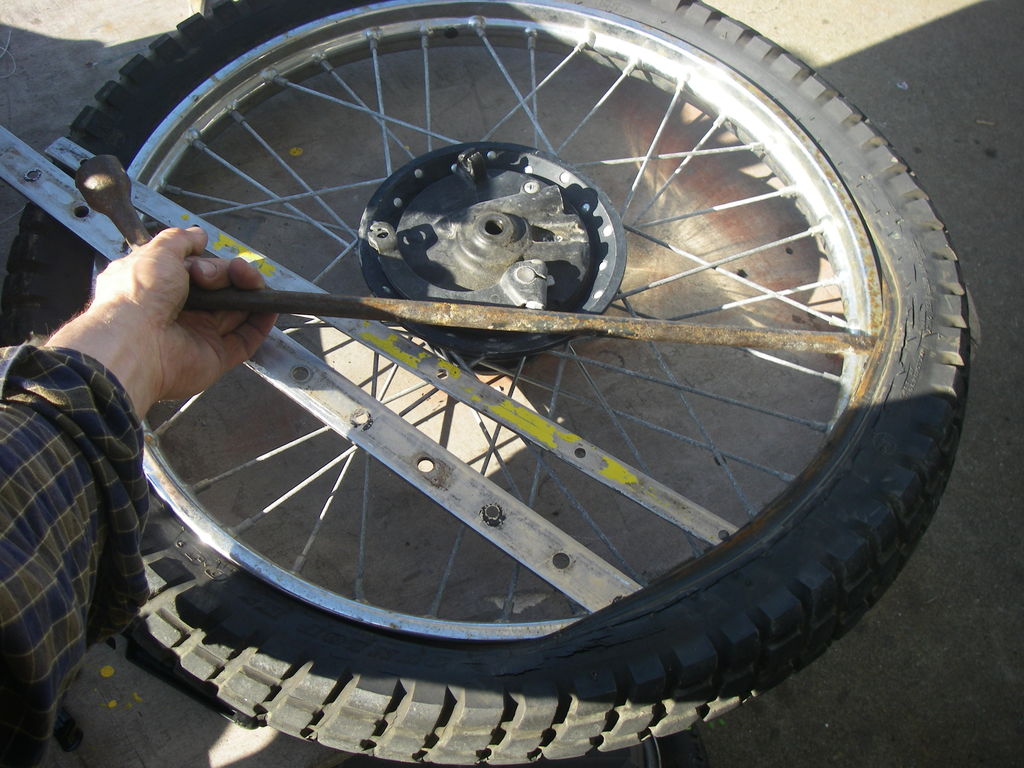 This is not only a quick and easy way to flatten a tire, but it is also the safest way.
This is not only a quick and easy way to flatten a tire, but it is also the safest way.
You can flatten your tires by removing the metal pin from the valve stem. This will continuously let the air escape from the tire. It is more convenient than pressing down the pin because it can stress your hand if you plan to flatten your tire completely.
It is also possible to flatten your tire by slashing it with a knife or creating a big hole using a nail. But these methods are quite risky because a big gust of air can suddenly burst in your face.
Also, you can use these methods if you plan to dispose of your tire. Unlike if you flatten the tire by removing the metal pin, you can still recycle the tire for other purposes.
You need a sharp and pointed knife to slash and flatten your tire. Aim for the sidewall, then make a quick and forceful slash. Push the blade into the tire deep as you pull it to the side. Slashing your tire can create a loud burst.
Slashing your tire can create a loud burst.
It’s also quite risky as the tire’s air can suddenly burst in your face. While this may be the “easiest” way to slash a tire, it is not that easy.
A slashed tire can deflate in a matter of seconds. If the tire blows up, then it can flatten more quickly.
You can use a retractable box cutter or a utility knife to slice your tire effectively. Begin by thrusting the tip of the blade directly into the surface of the rubber about 2.5 centimeters from where the tread begins.
It may seem like it is alright to miss a valve stem cap. However, this causes the valve stem to be prone to dirt and debris, which can break through the seal. Unfortunately, this will result in a loss of air pressure. The air will escape from the tire through the valve stem.
You can flatten a tire in seconds, but it is possible to take a few minutes. It all depends on the method you will use to flatten a tire. If you deflate it, it can take you a few minutes by pushing down the valve stem’s metal pin.
It all depends on the method you will use to flatten a tire. If you deflate it, it can take you a few minutes by pushing down the valve stem’s metal pin.
You might even have to stop from time to time as it can be tiring to keep pushing the pin down manually.
Detaching the metal pin from the valve stem’s seal will allow you to flatten your tire in seconds. This is because a big gust of air will escape from the tire.
You can also quickly flatten your tire using a sharp knife, but this is not safe. This will also wholly damage the tire, and you might not be able to recycle it for other purposes anymore.
To reiterate, here’s how to flatten the tire of your vehicle quickly and safely:
You don’t need too many tools to get this job done. However, you need a valve core tool or a pair of long needle-nose pliers.
You can also flatten your tire quickly using a sharp knife. But it is not as convenient and safe as simply removing the metal pin from the valve stem. Also, using a knife will damage the tire ultimately. You will not be able to reuse it or recycle it even for other purposes.
Read next:
Truck Tire Wear Patterns
How to Get the Screw Out of the Tire and Repair the Tire
Knowing how to change a tire is a necessary skill for all drivers. If you rely on a cell phone to save you in a roadside emergency, there’s always that chance you will forget to charge it, be out of range, or leave it at home. Flat tires can happen anywhere, and a cell phone is no substitute for knowing how to change a flat tire.
Thankfully, changing a tire isn’t all that hard! Just adhere to the following guidelines to be prepared in case you have a flat.
These items should have come with your vehicle:
Jack
Lug wrench
Fully inflated spare tire
Vehicle owner’s manual
If you have misplaced any of these items, or if your car did not come with these items, you should purchase new ones right away.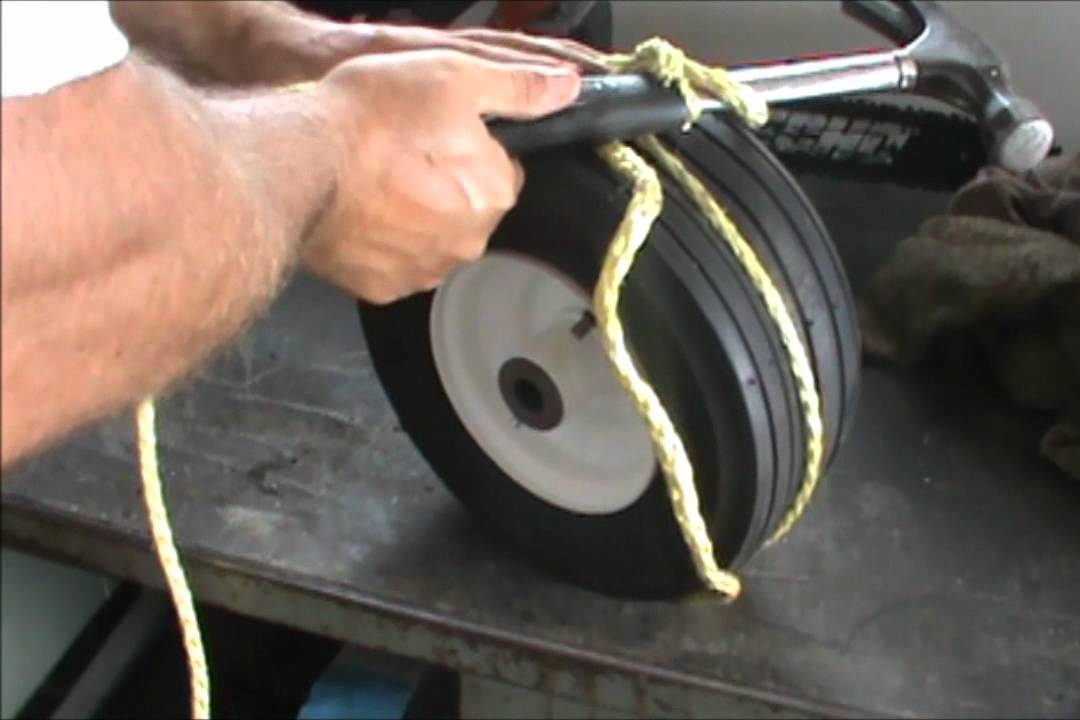 And be sure you’re regularly inflating the spare tire to your vehicle manufacturer’s recommended PSI. You should check the spare’s air pressure every time you check your other tires. Remember to check pressure every month and before long trips or carrying extra load.
And be sure you’re regularly inflating the spare tire to your vehicle manufacturer’s recommended PSI. You should check the spare’s air pressure every time you check your other tires. Remember to check pressure every month and before long trips or carrying extra load.
Here are some items that don’t come with your vehicle but that you should stow in your trunk or glove box in case you have to change a flat tire:
Flashlight with working batteries
Rain poncho
Small cut of 2"x6” wood to secure the jack
Gloves
Wheel wedges
As soon as you realize you have a flat tire, do not abruptly brake or turn. Slowly reduce speed and scan your surroundings for a level, straight stretch of road with a wide shoulder. An empty parking lot would be an ideal place. Level ground is good because it will prevent your vehicle from rolling. Also, straight stretches of road are better than curves because oncoming traffic is more likely to see you.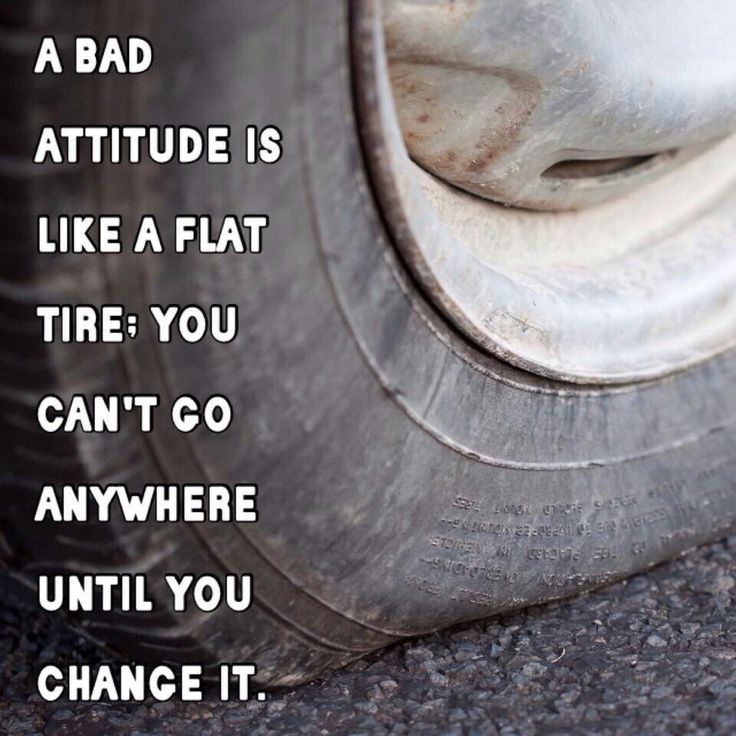
Never attempt to change your tire on a narrow shoulder near oncoming traffic. Keep moving (slowly) until you find a safer spot. While driving on a flat risks ruining your rim, replacing a rim is better than being hit by an inattentive driver.
Make sure to consult your owner’s manual and review their specific steps on how to change a flat tire for your vehicle
Your hazard lights or “flashers” will help other drivers see you on the side of the road. To avoid an accident, turn them on as soon as you realize you need to pull over.
Once stopped, always use the parking brake when preparing to replace a flat tire. This will minimize the possibility of your vehicle rolling.
Wheel wedges go in front of or behind the tires to further ensure the vehicle doesn’t roll while you fix the flat tire. If you’re changing a rear tire, place these in front of the front tires. If your flat tire is at the front, put the wheel wedges behind the rear tires.
If your flat tire is at the front, put the wheel wedges behind the rear tires.
Bricks or large stones will work just as well as “real” wheel wedges. Just be sure they’re large enough to stop the car from rolling.
If your vehicle has a hubcap covering the lug nuts, it’s easier to remove the hubcap before lifting the vehicle with the jack. If your lug nuts are exposed, you can skip ahead to Step 6.
Use the flat end of your lug wrench to remove the hubcap. This will work for most vehicles, but some hubcaps need a different tool to come off. Consult your owner’s manual for proper hubcap or wheel cover removal procedures.
Using the lug wrench, turn the lug nuts counterclockwise until you break their resistance. You may have to use force, and that’s ok. Use your foot or all of your body weight if necessary.
Loosen the lug nuts about ¼ to ½ of a turn, but don’t remove them completely yet. Save that for when it’s time to remove your tire/wheel from the vehicle.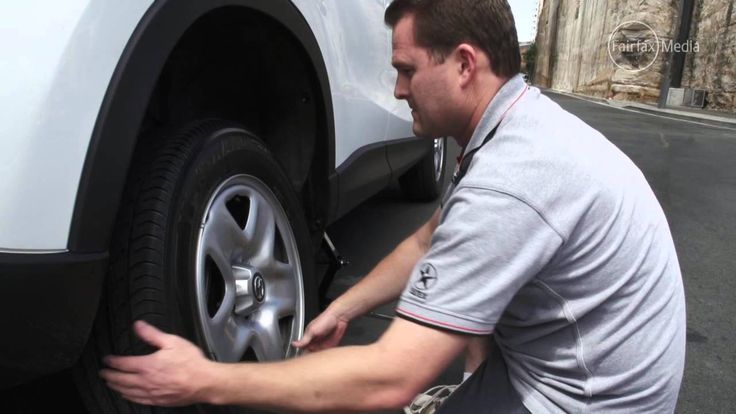
The right place for the jack is usually beneath the vehicle frame alongside the tire that’s flat. Many vehicle frames have molded plastic on the bottom with a cleared area of exposed metal specifically for the jack. To safely lift and avoid damage to the vehicle, follow the instructions for jack placement in your vehicle owner’s manual.
To prevent the jack from settling under the weight of your vehicle and coming off balance, place a small cut of 2x6” wood beneath it before attempting to raise your vehicle. This tactic is especially helpful on asphalt.
With the jack properly positioned, raise the vehicle until the flat tire is about six inches above the ground.
Never put any part of your body under the vehicle during or after raising the vehicle with the jack.
Now it’s time to remove the lug nuts all the way. Since you've already loosened them, you should be able to unscrew them mostly by hand.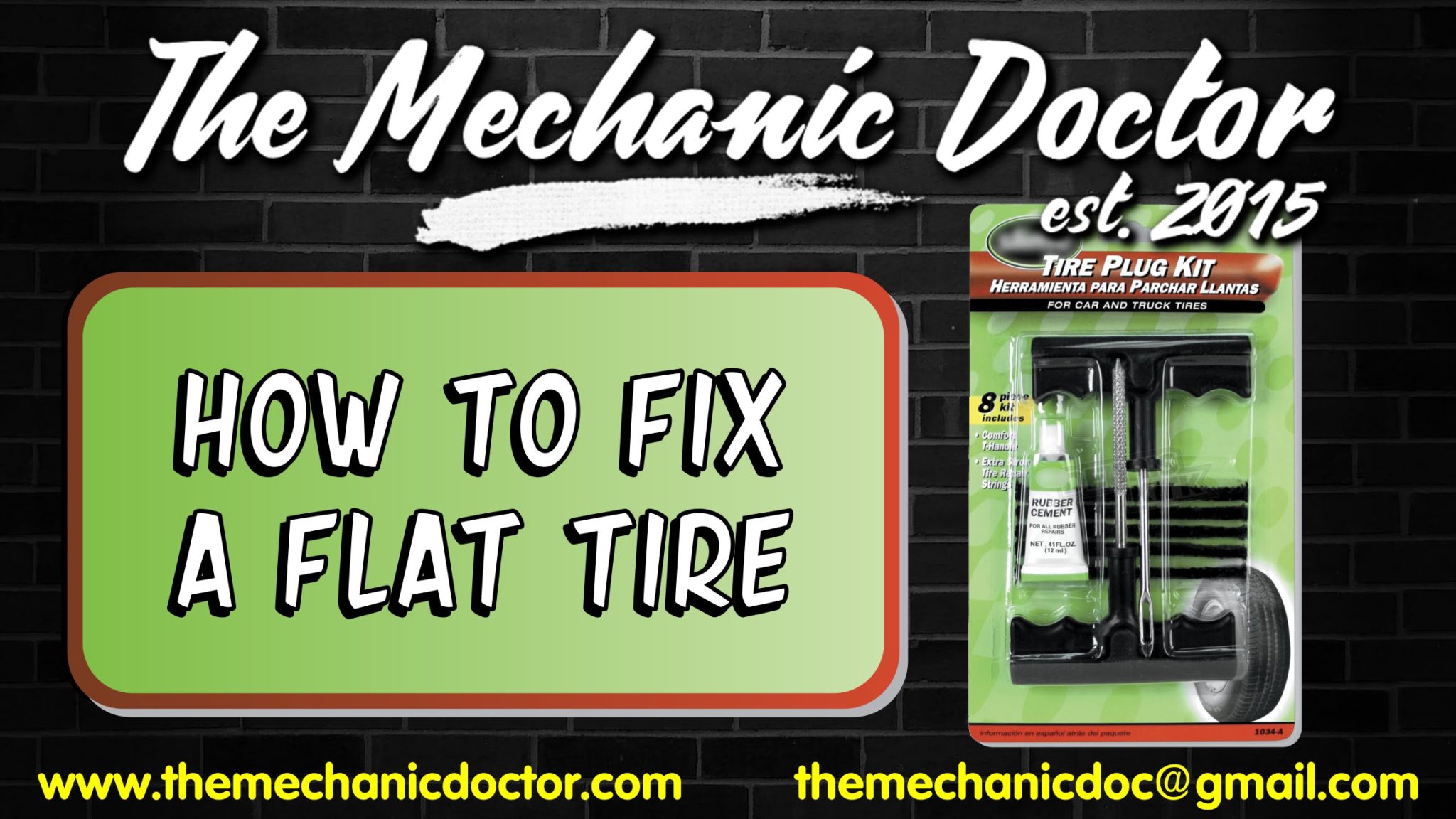
Gripping the tire by the treads, pull it gently toward you until it’s completely free from the hub behind it. Set it on its side so that it doesn’t roll away.
Now place the spare on the hub by lining up the rim with the lug bolts. Push gently until the lug bolts show through the rim.
Put the lug nuts back on the lug bolts and tighten them all the way by hand. Once they are all on, check each one again, tightening as much as possible. You will tighten them with the wrench after lowering the vehicle to the ground.
Use the jack to lower the vehicle so that the spare tire is resting on the ground but the full weight of the vehicle isn’t fully on the tire. At this point, you should tighten the lug nuts with the wrench, turning clockwise, as much as you can. Push down on the lug wrench with the full weight of your body.
Bring the vehicle all the way to the ground and remove the jack. Give the lug nuts another pull with the wrench to ensure they’re as tight as possible.
If the hubcap you took from the flat tire will fit your spare, put it in place the same way you removed it initially. If it doesn’t fit, stow it away with the tire when you stow your equipment.
You have before you a jack, a lug wrench, wheel wedges, your flat tire, and possibly a hubcap. Don’t forget to put all of them in your vehicle before driving away.
You should check the tire pressure of the spare tire to make sure that it is safe to drive on. “T-Type” temporary spares, also called “mini-spares,” require 60 psi (420 kPa). If the tire needs pressure, drive (slowly) to a service station immediately.
Temporary spare tires aren’t made to drive long distances or at high speeds, so drive cautiously until you’re able to visit a tire technician.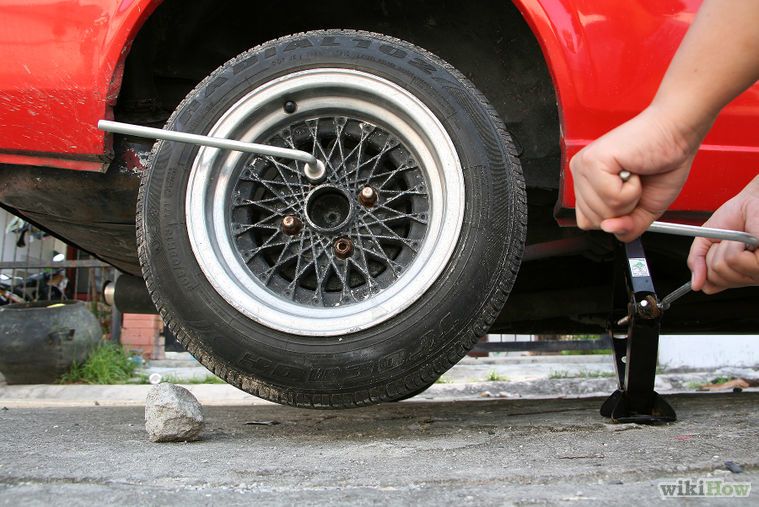 A professional should be able to determine whether your tire needs a repair or if it’s time to replace it.
A professional should be able to determine whether your tire needs a repair or if it’s time to replace it.
Aside from taking your tire to a professional, the above procedure shouldn’t take more than 15 to 30 minutes to change a tire. Just be sure you don’t leave out any steps.
It’s beneficial practice changing a tire in your garage or driveway to ensure you’re ready to handle this situation if it ever happens to you.
Knowing how to fix a flat tire is great, but regular tire maintenance is even more important. In addition to reviewing this guide regularly, remember to do the following:
Keep your tires properly inflated
Rotate your tires according to the manufacturer’s guidelines
Monitor for tread wear
All of these precautions will extend the life of your tires and reduce the likelihood of a flat. While there’s no way to prevent flat tires completely, proper care can improve performance and ensure your tires last as long as possible.
There’s never a good time for a flat. That’s why Bridgestone DriveGuard tires are masterfully engineered to keep you moving for up to 50 miles at speeds up to 50 MPH without disruption.
There’s never a good time for a flat. That’s why Bridgestone DriveGuard tires are masterfully engineered to keep you moving for up to 50 miles at speeds up to 50 MPH without disruption.
See Details Find Your Fit
90,000 how to get with a launched wheel drive with a launched wheelContent:
Finding a puncture in the water
Sometimes finding the cause of a flat tire is not easy. And even the masters are sometimes lost, realizing that the tire is visually intact, but deflates. There are several solutions to this situation.
Tip!
First of all, you can try to inflate the tire by 1-1.5 atm and listen to see if it bleeds air. If you can't hear it, you should wet the wheel with soap and water and find the area in which air is bubbling. If there is no result here, you need to lower the entire tire into the water.
It often happens that a removed wheel retains air, and if you put it on a car, it blows off. Followed by:
What can happen if you drive with a flat tire? It is clear that the time for which the tire deflates can be different.
If the tire is punctured with something sharp, it is quite possible that the wheel will hold pressure for a certain period. On such tires you can get to car service
Move carefully. Along the way, it is correct to inspect the tire from time to time and, if necessary, inflate the tire
The pumping device should be taken with you.
However, what to do if the tire is completely deflated and it is impossible to inflate it, is it allowed to move on? In theory, of course, it is possible, but such a movement threatens with trouble. First of all, the ride will be with a complete lack of comfort.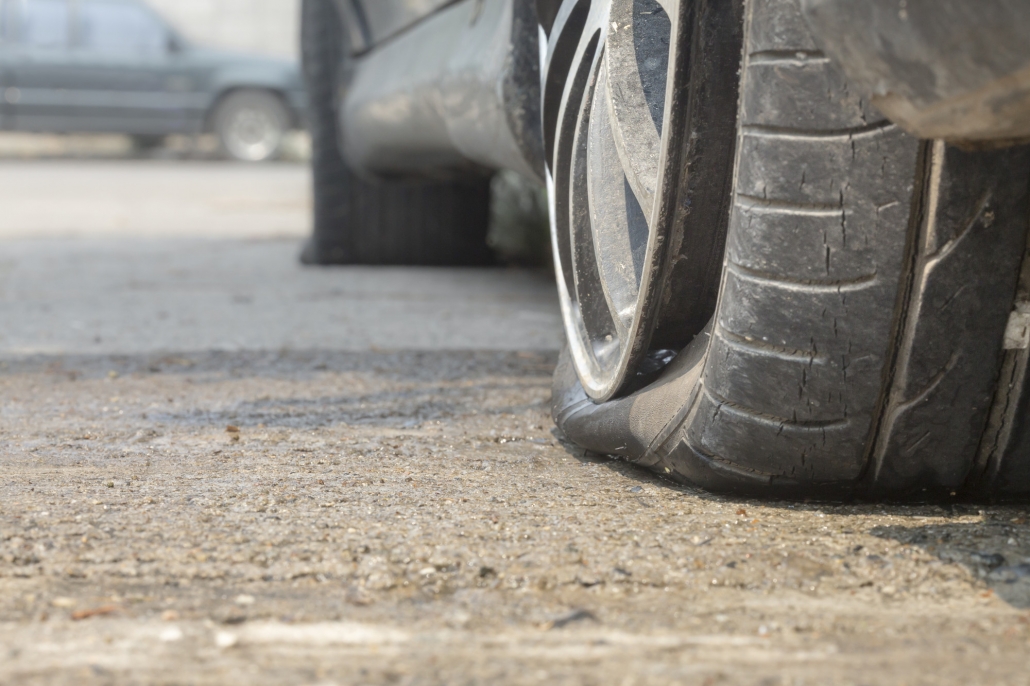 And the second moment, both the tire and the disk will have to be thrown away in the future, and this is an additional cash outlay.
And the second moment, both the tire and the disk will have to be thrown away in the future, and this is an additional cash outlay.
Driving without a license while intoxicated in someone else's car again
Let's start with the spool. This problem is trivially simple and occurs on all types of wheels. Parts of the valve, which should allow air from the boost pump and prevent it from escaping, wear out, or there may be a manufacturing defect.
If bubbles appear, even very slowly, then the spool needs to be replaced, it costs a penny. Also, perhaps the part is simply not tightly fixed. It is necessary to take a special key or a cap with a corresponding connector on the back and try to screw the spool all the way.
If the spool “poisons”, you need to take a special key and try to tighten the spool to the stop
As for the fitting, this problem is more relevant for tubeless tires. This element may look quite serviceable, but it does not fit snugly against the metal at the junction with the disk. Here you will also need a soap solution. This is a very common problem, the solution of which, even for all four wheels, will not result in noticeable cash outlays.
Here you will also need a soap solution. This is a very common problem, the solution of which, even for all four wheels, will not result in noticeable cash outlays.
Leaking fitting may start over time when the rubber loses its properties. Also, the descent can be episodic - during cold snaps, when the part decreases in size by microns and does not hold pressure so tightly.
What are the backstage in the car
It is possible that the cause of air loss was the loose fit of the tire edge to the rim of the rim. This is true for tubeless tires. This is also checked with a soap solution. In this case, it is better to remove the wheel from the mounts and install it horizontally. Then it will be possible to see exactly whether the bubbles are inflating. A similar situation arises due to damage to the contact zone of the disk or tire. But more often - it is the disk: curvatures from pits and curbs, cracks, corrosion.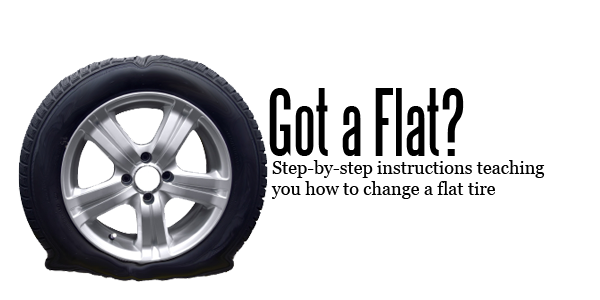
The tightness of the edge of the tire to the rim can be easily checked with soapy water
Do not be surprised, for example, if it turns out that the whole thing is in peeling enamel, which is painted on the inside of the wheel. Everything must be in perfect condition. Also, tire fitters can additionally use sealing compounds, which then from increased loads, or simply can collapse over time.
Motorists often complain about the dependence of such manifestations on temperature changes. Here we look at the previous paragraph - the rubber shrinks a little, the adhesion force of the walls drops, air leakage occurs
Particular attention should be paid to this option for owners of tires that have been in service for more than 5 years. Tires in such a list are in the first place. However, if the wheels are relatively new, but after a long period of inactivity they gave out a shortage of a couple of tenths of an atmosphere, then you should not panic and go to the service station. For long periods of inactivity (say, a couple of months), this is a normal picture. In general, experts recommend updating the pressure 2-3 times a month.
For long periods of inactivity (say, a couple of months), this is a normal picture. In general, experts recommend updating the pressure 2-3 times a month.
All about sedansSickness in the car, what to do if a child gets sick in a car, what to do if a dog gets sick in a carMore on the topicComments
Tubeless tire
But no matter how good and reliable a wheel with a tubeless tire is, it can also go flat. Reasons for a flat tire:
As stated above, a tubeless wheel will not deflate even after multiple punctures, but this is only possible if the element that punctured the tire remains in the tire. The inner surface of the tubeless tube is covered with a special viscous compound that sticks to a nail, self-tapping screw, wire and prevents air from seeping out. But if the pierced object is pulled out, then the viscous composition will not be able to tighten the hole and the air will come out.
But if the pierced object is pulled out, then the viscous composition will not be able to tighten the hole and the air will come out.
Therefore, if a foreign object is found in the tire, do not rush to pull it out. It is better to leave it in place and continue to operate the car, and when you get to the service station, pull out the protruding element and seal the breakdown site.
But it happens that after a puncture, the object does not remain in the wheel and such a tire will flatten. The rate of air bleeding depends on the size of the damage. In some cases, the deflation of the tire is so slow that the loss of half the air pressure takes several days. With such a puncture, it is enough to periodically pump up the wheel and continue to drive the car, and contact the service station as soon as possible.
But slow descent is not always the case. If a large hole is formed (for example, when hitting a rebar), the wheel will be lowered in a matter of minutes.
Tire cuts are less common than punctures.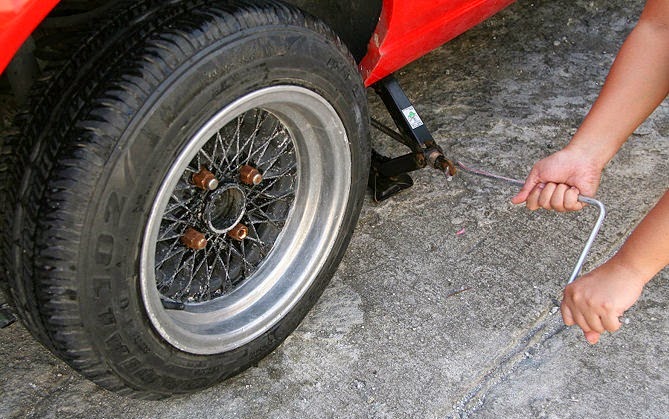 And such damage appears on the sidewalls, since it is difficult to cut through the working surface of the tire. The most common cause of a cut is clinging to the sidewall of sharp objects and protrusions. Cut - serious damage to the wheel. With mild cuts, you can still try to restore the wheel (at the service station), but if the size of the cut is long and through, then the tire must be replaced. Note that some service stations offer to restore a wheel with a severe cut, but it is better to refuse this service. When cut, the cord is damaged and it will not be possible to restore its integrity. Even if the wheel does not deflate, it can “shoot out” at any moment during movement, and this phenomenon is very dangerous.
And such damage appears on the sidewalls, since it is difficult to cut through the working surface of the tire. The most common cause of a cut is clinging to the sidewall of sharp objects and protrusions. Cut - serious damage to the wheel. With mild cuts, you can still try to restore the wheel (at the service station), but if the size of the cut is long and through, then the tire must be replaced. Note that some service stations offer to restore a wheel with a severe cut, but it is better to refuse this service. When cut, the cord is damaged and it will not be possible to restore its integrity. Even if the wheel does not deflate, it can “shoot out” at any moment during movement, and this phenomenon is very dangerous.
Peeling of the tire from the rim occurs when the wheel is subjected to severe shock loads that lead to disk deformation. This happens when you hit a hole at speed. A strong impact causes the impact energy to reach the disk, and the metal bends.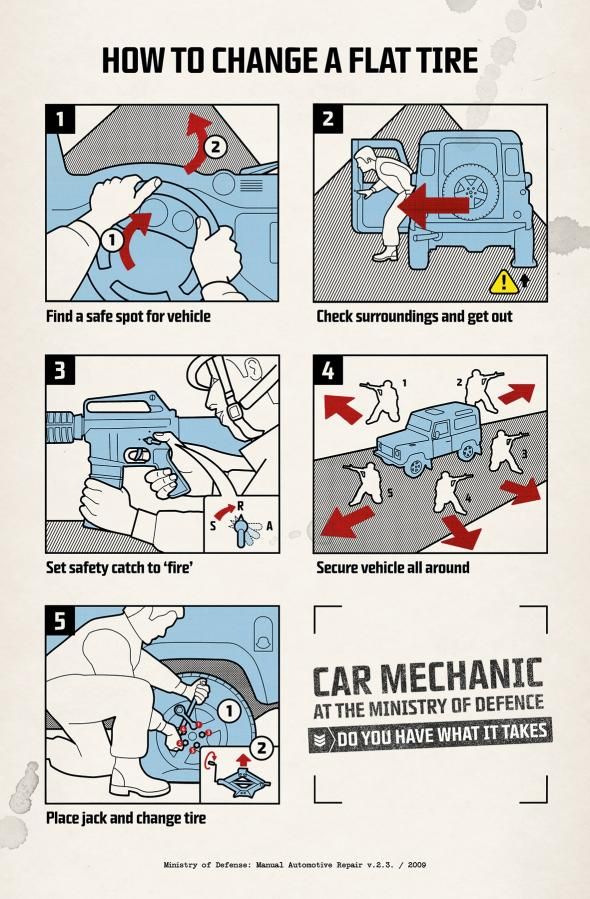 As a result, the tire no longer fits snugly against the disc and the air escapes through the gap formed. This problem did not exist in tubed tires, and the flexing of the disc did not cause the wheel to deflate (provided that the tube remained intact during the impact).
As a result, the tire no longer fits snugly against the disc and the air escapes through the gap formed. This problem did not exist in tubed tires, and the flexing of the disc did not cause the wheel to deflate (provided that the tube remained intact during the impact).
Tubeless valve assembly
Disc warp is a problem that cannot be fixed on the road. It is possible to restore the geometry of a part only on special rolling machines available at the service station.
Lowering the wheel through the spool is quite common. The defective element is unable to hold air. Here it is enough to replace the spool, and pump air again.
But if the air is etched at the place where the nipple is installed, then a visit to the tire shop cannot be avoided, since it is necessary to glue the nipple, and for this the wheel is disassembled.
Something else useful for you:
Breakage of the nipple
You can also detect a blown wheel when the rubber adheres poorly to the rim of the disk. This means that grains of sand or something small have penetrated between them, for example, corrosion of the rim itself. Here you need to pump up the "injured" wheel and visit a tire shop, because the tire will continue to run flat until the masters straighten the disk. In addition, the same problem may develop because the product was stored incorrectly, and the rubber is slightly “glass”.
This means that grains of sand or something small have penetrated between them, for example, corrosion of the rim itself. Here you need to pump up the "injured" wheel and visit a tire shop, because the tire will continue to run flat until the masters straighten the disk. In addition, the same problem may develop because the product was stored incorrectly, and the rubber is slightly “glass”.
Air also leaves the rubber if the nipple element breaks. If the nipple element is simply wetted with saliva and the surface is found to be bubbling, this means that it should be urgently replaced. Car service masters will help to replace the nipple, however, with experience, it is really possible to do this simple work yourself. In this case, you need to prepare:
A tire without a tube at low temperatures can easily deflate, this is due to the fact that even expensive types of tires harden during frosts, and this provokes a loss of tightness.
It is enough to heat the tire and the problem will be eliminated. However, this, of course, is not a solution, you should visit a tire shop, and the master will remove the tire from the disk, coat the rim with a hermetic substance and assemble, then the problem will be resolved, the tire will stop deflating.
The first category includes punctures, cuts, disc deformations. Everything related to road conditions, and sometimes - the way you drive.
For the second - operational problems - the nipple is leaking.
To the third - technological problems.
Punctures, cuts, dents in the disc can be found by visual inspection. If this does not help, you can make a soapy solution and spray the wheel - air bubbles will indicate a puncture. However, if the puncture is very small, such a search can turn into torture: in this case, it is better to submerge the wheel completely in a suitable container of water. You can also find a defect when it etchs between the disc and tire, and if there is a problem with the nipple.
You can also find a defect when it etchs between the disc and tire, and if there is a problem with the nipple.
The leakage of the nipple is easily determined with the help of water: everything is simpler here, you don’t need to bathe the wheel - unscrew the cap, wet the nipple nipple - if the air poisons, you will see it by inflating the air bubble.
Technological problems. A very rare defect inherent in low-quality rubber. Without going into details, I will say: there is such a thing as diffusion. This is the process of penetration of molecules of one substance into another. In other words, air passes through the rubber. Sounds crazy, but this is the physical law of our world. Such a defect is extremely rare, and the diffusion rate is so low that it can be overlooked. You just have to understand why the wheel, although rare, needs to be pumped up.
If a problem has been identified and you cannot fix it yourself, then it is not shameful to do the same as experienced drivers - go to a tire fitting, preferably a quality one, on which dubious patches are not molded. Also, there must be a balancing stand at the installation - wheel balancing after repair is not even discussed. But knowing in advance how much time you will spend is very difficult. Perhaps the puncture is small, and will be eliminated with the help of a special fungus within 15 minutes, or vulcanization may be required, with complete disassembly - from 30 minutes to an hour.
Also, there must be a balancing stand at the installation - wheel balancing after repair is not even discussed. But knowing in advance how much time you will spend is very difficult. Perhaps the puncture is small, and will be eliminated with the help of a special fungus within 15 minutes, or vulcanization may be required, with complete disassembly - from 30 minutes to an hour.
I have repeatedly heard a similar question, the answer is - nothing will happen, ride on your health. But there are a couple of things to keep in mind.
First, you don't know the reason for the flat tire. No one will guarantee that a slowly flattening tire will not go down quickly, somewhere in the steppe, and you are without a spare wheel, and outside the coverage area of mobile communications. Or, even worse: perhaps a defect has formed on the inside of the tire - you can't see it. Jokes are bad with this: if the wheel lowers regularly, look for the reason.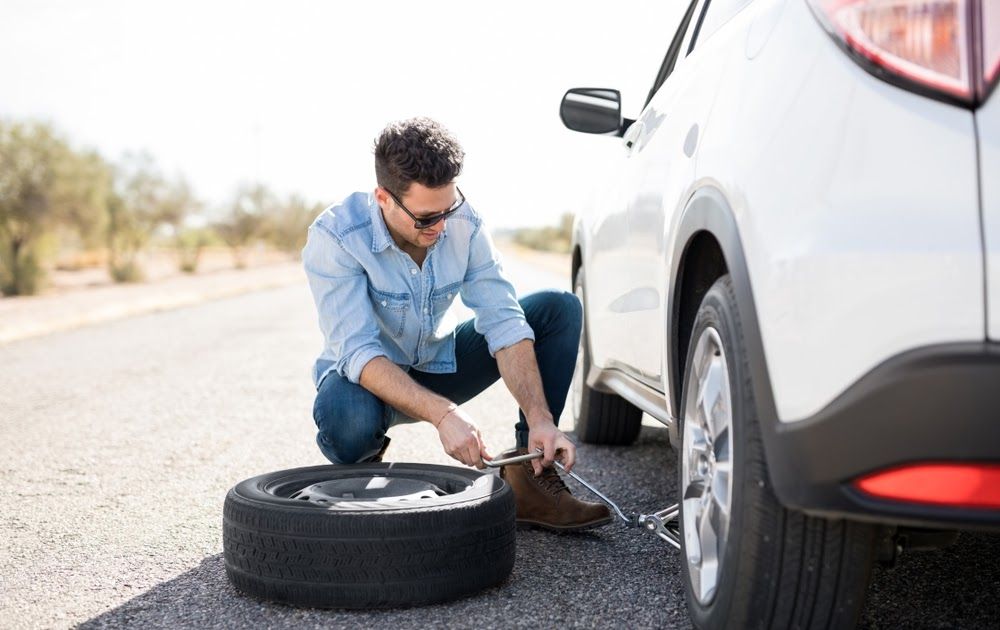
Second, be sure that one day you will forget to pump up the tire and drive on empty. And then, while you figure it out - you can easily chew on a tire, so think about it - is it worth it?
What to do if you notice a flat tire too late and drive with a flat tire. The first and only thing is to put a spare. The principle: "I've already spoiled the rubber, I'll pump it up and I'll get there" is unacceptable. The fact is that serious tire deformations that occur when driving on a flat tire are primarily associated with the cord, and may not be noticeable outwardly. The cord is the threads (synthetic and metal) that are inside the rubber and serve as the frame of the wheel. And if several threads burst, there is no guarantee that when hitting a bump, or getting into a hole, the wheel will not “shoot out”. Do not joke with safety - at the tire shop they will tell you whether the wheel is good or not.
And finally, with your permission, a little advice. Quite often, with a side cut, some craftsmen suggest inserting a camera into a tubeless wheel. Agree to such a scam only in a hopeless situation. The fact is that with a strong deformation of the tire on the road (bump / pit), the camera can crawl into the cut and break. The consequences of an unexpected, and most importantly, instantaneous descent of the wheel, at speed, can be unpredictable. Depending on the traffic situation, even a professional can be powerless in such a situation. Do not think that I scare, but the wheels are your safety on the road - do not tempt fate.
Agree to such a scam only in a hopeless situation. The fact is that with a strong deformation of the tire on the road (bump / pit), the camera can crawl into the cut and break. The consequences of an unexpected, and most importantly, instantaneous descent of the wheel, at speed, can be unpredictable. Depending on the traffic situation, even a professional can be powerless in such a situation. Do not think that I scare, but the wheels are your safety on the road - do not tempt fate.
Also: inserting a tube into a tubeless tire (in any case) will cause air to collect between the tube and the inner surface of the tire. And this will lead to excessive heating of the wheel.
Let your journey be comfortable and safe, and questions: what to do if a flat tire? remain on paper.
Especially for the site "driving after 30."
A large number of modern cars are equipped with tubeless wheels. Unlike tube tires, they make it possible to save tire pressure for a certain period, which ensures safety. Sometimes it happens that the owner of a car on tires without a tube drives with a screw in the tread for 2-3 months and does not notice anything. Naturally, serious punctures are not meant here.
Sometimes it happens that the owner of a car on tires without a tube drives with a screw in the tread for 2-3 months and does not notice anything. Naturally, serious punctures are not meant here.
Hitting a curb
For your information!
When the driver pierced the chamber wheel, it will instantly deflate.
If you have flat tires on your car, what to do
It is important to understand that a flat tire can cause a serious accident, especially if the car is moving at a high speed
Therefore, professionals advise every driver who still has tires with a tube to change them to tubeless ones.
Why did the tire break? What to do in a difficult situation? Experienced car owners know about this. Feeling that the car tilted due to the fact that the wheel was pierced, it is necessary to identify the cause of what happened. Possible problems:
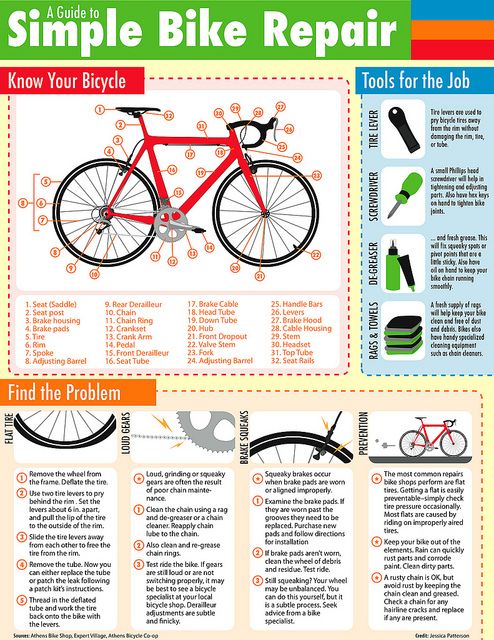 If a tire without a tube deflates due to damage, usually the driver can still get to a car service with regular tire inflation, and sometimes without using a pump.
If a tire without a tube deflates due to damage, usually the driver can still get to a car service with regular tire inflation, and sometimes without using a pump. 
It should be clarified that:
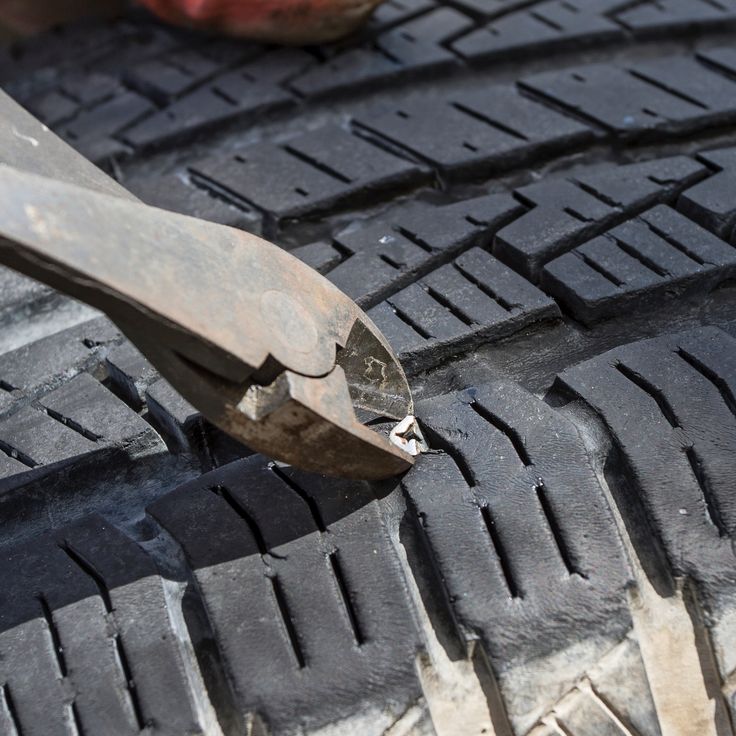 In case of breakage, it should be replaced with a new jack of the same model
In case of breakage, it should be replaced with a new jack of the same model When changing a wheel, follow the following order:
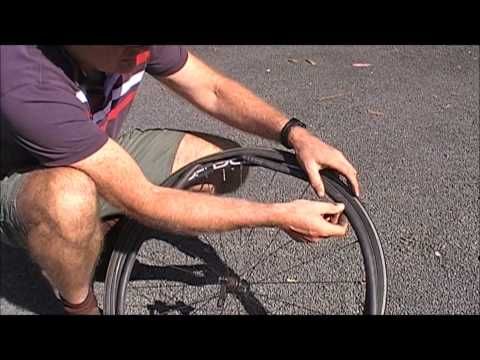
 8.
8. Solving the problem with a flat tire on the way depends on the equipment of the car. So, during the movement there were loud "squishing" sounds. These are clear signals that the tire has flattened. If the air has escaped from the front wheel, then the controllability of the car will also worsen significantly - the car will begin to pull strongly to the side. In this case, you should immediately smoothly and gently stop the movement.
The simplest solution is to use a spare tire. But for this, a spare wheel, a balloon wrench and a jack must be present in the car. This is the minimum set, it is also desirable to keep an emergency stop sign, wheel chocks, a pump or an autocompressor in the car.
And then everything is simple:
Before starting work, be sure to check which spare tire is available. The fact is that dokatki should not be installed on a controlled axle. Therefore, if there is a dokatka in case of breaking through the front slope, you will have to tinker - remove the full-size wheel from the rear axle and put a dokatka instead, and replace the broken one with a normal one. At the same time, while driving, you should observe the speed limit, no more than 60 km/h.
Another solution to the problem is to use a "first aid kit" to repair tubeless tires. But you need to buy it in advance and carry it in the car.
This first aid kit includes a tool and means to eliminate punctures and cuts
But when using the "first aid kit" it is important to follow the technology of sealing the puncture.
If there is no spare tire and "first aid kit", but there is a pump or compressor, then pump up the tire and set the rate of descent. If the air poisons slightly, then on such a wheel you can get to the nearest tire shop, periodically stopping and pumping up the wheel
Worse if no tools or equipment are available and the chute descends very quickly. In this case, you will have to continue to move on such a wheel. But at the same time, you should move at the lowest possible speed, with the emergency gang on, and preferably on the side of the road.
https://youtube. com/watch?v=_M3jrV2Aikk
com/watch?v=_M3jrV2Aikk
On a flat tire, you can drive to the place of repair, but after such a trip, the tire cannot be restored. In addition, a trip in such conditions will create serious stress on the transmission elements, which will shorten their service life.
Therefore, it is better to carry a tool kit, a first aid kit for tires and a spare wheel in the car. With such equipment, the breakdown will not be taken by surprise.
Every driver must be aware of the seriousness of the situation, so that even the temptation does not arise to ignore a leaky tire. Any delay will only exacerbate an already dangerous situation. On a flat tire, you can only drive to the nearest tire shop. But no more.
A tire is not a piece of rubber on a rim. It is a complex structure in which every detail plays its role. Automobile rubber consists of several layers. For the production of each of them, a special fiber is used and special technologies are used.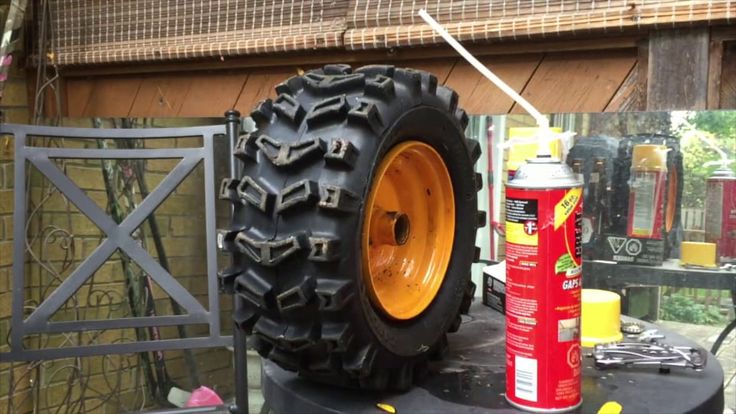 Even the tread pattern is not created for beauty. A team of specialists is working on its development, numerous tests are carried out so that the functionality of the drawing is maximum.
Even the tread pattern is not created for beauty. A team of specialists is working on its development, numerous tests are carried out so that the functionality of the drawing is maximum.
If the wheel leaks air, then its functionality is impaired. When driving on such tires, the following situations arise:
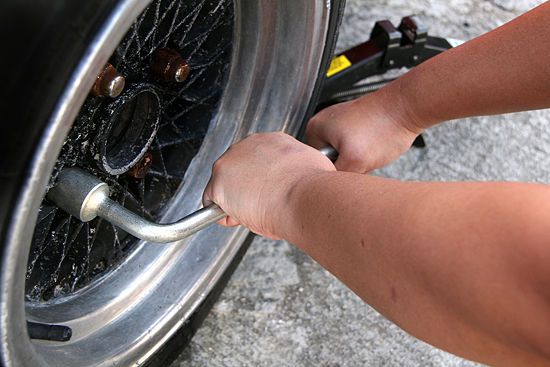
Now you can tell whether you can drive with a flat tire. The situation is extremely clear. But what to do if there is no other way out and you really need to drive on your own to the tire station?
Next, we have to figure out how much you can drive on a flat tire and how to do it correctly. This information will be useful to every driver, because no one is immune from the occurrence of such a problem.
There are many reasons why a tire may start to deflate. The most common situations are:
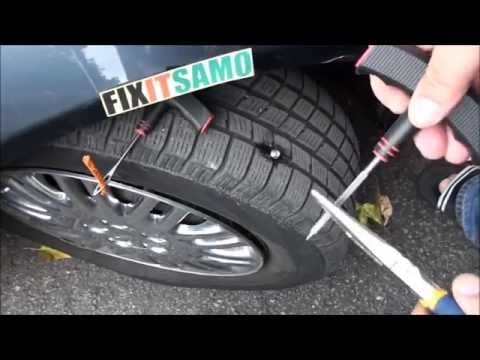 The problem is easily solved - it will be enough just to twist it.
The problem is easily solved - it will be enough just to twist it.
Most of the cars are equipped with wheels without a tube, which maintain pressure in the tire during a puncture.
They guarantee safe driving even when flat, and with little damage they can hold their shape for several days. Despite their practicality, you should immediately look for the causes of wheel leaks.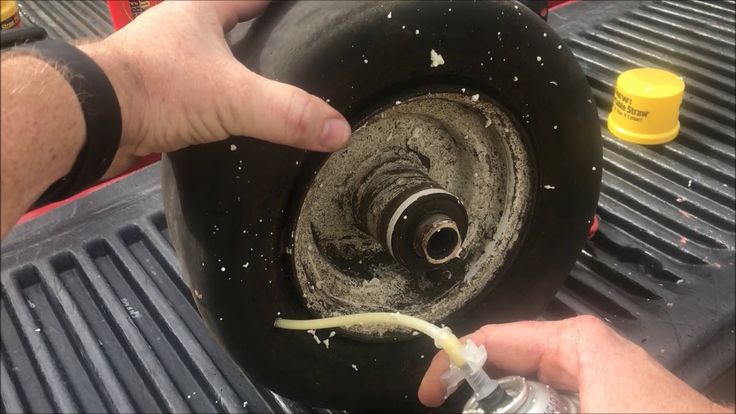 If you do not repair a punctured car tire in advance or do not fix warped alloy wheels, the operation of the car will lead to an emergency.
If you do not repair a punctured car tire in advance or do not fix warped alloy wheels, the operation of the car will lead to an emergency.
Since even tubeless tires flatten for no apparent reason, you need to carefully inspect the car and the condition of the disks in order to detect a malfunction in advance. This will help to avoid a number of problems during the trip. Driving with flat tires adversely affects the performance of the machine. The vehicle has poor traction, the steering wheel pulls to the side with a bad tire, acceleration and braking are deteriorating. If the tires of the car are slowly deflated, this leads to increased fuel consumption.
To understand the problem, let's examine the reasons for which it releases air:
 It can bleed due to stones found on unpaved surfaces. More often, a metal object gets stuck in the wheel tread without damaging the rim and alloy wheel. Since the screw or nail remains in the tread, the air escapes slowly, which allows you to safely drive to the service. Pulling out the item yourself, if it is not possible to immediately fix the wheel, is not worth it. This will lead to depressurization.
It can bleed due to stones found on unpaved surfaces. More often, a metal object gets stuck in the wheel tread without damaging the rim and alloy wheel. Since the screw or nail remains in the tread, the air escapes slowly, which allows you to safely drive to the service. Pulling out the item yourself, if it is not possible to immediately fix the wheel, is not worth it. This will lead to depressurization.  Due to the leaky fit, air slowly escapes into the gap formed. In addition to depressurization, such a breakdown can cause a “hernia”, the appearance of a beating steering wheel or vibration of the car body. The problem is fixed in the profile service by aligning the rim of the alloy wheel.
Due to the leaky fit, air slowly escapes into the gap formed. In addition to depressurization, such a breakdown can cause a “hernia”, the appearance of a beating steering wheel or vibration of the car body. The problem is fixed in the profile service by aligning the rim of the alloy wheel. It is often difficult to find the reason why the air in the wheel bleeds slowly. Even the masters can not always immediately detect a malfunction. You can find the problem yourself in the following way - pump over 1-2 atmosphere and listen to see if air comes out. If no sound is heard, then the wheel is wetted in a soapy solution and lowered into water.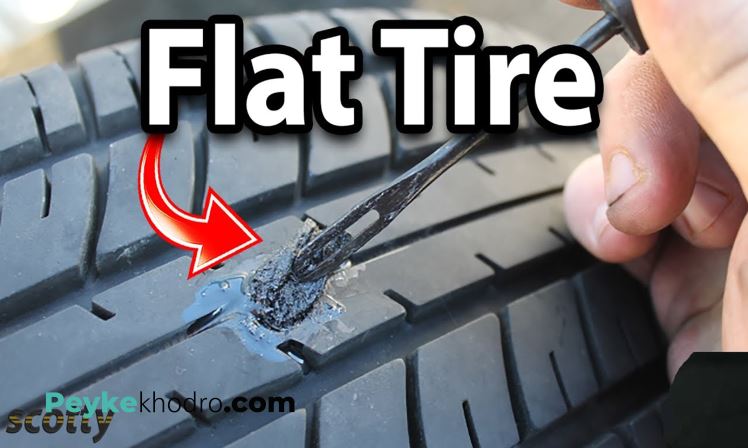 The area where air will begin to bubble will be the puncture site.
The area where air will begin to bubble will be the puncture site.
In cases where the wheel bleeds air on the car, but does not deflate when it is removed, it is necessary to disassemble and wipe the inside of the tire. In the presence of sharp objects, the fabric will catch on, indicating the puncture site.
Find the causes of rubber puncture near the nipple, on the rim of the alloy wheel or in the tread using indirect causes: ;
If the tire on the car began to slowly deflate as a result of a side cut, then such repairs are not easy to make even for masters.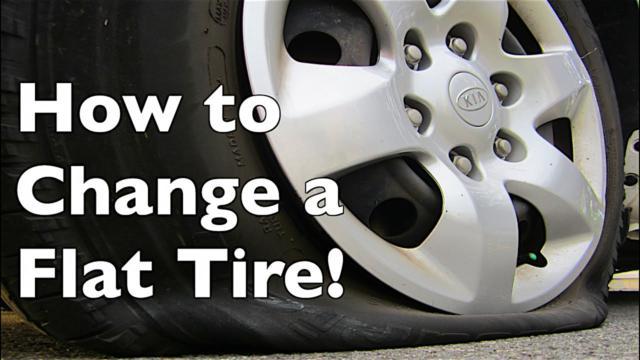 Unlike a tread puncture, the area near the rim of an alloy wheel is softer and thinner. This does not allow you to put a patch or install a harness. Even after removing the cause, the damaged wheel will slowly bleed under load. Also, repairing a side puncture is dangerous because it affects the durability of the tire. Therefore, with a strong side cut, it is better to change the wheel to a new one.
Unlike a tread puncture, the area near the rim of an alloy wheel is softer and thinner. This does not allow you to put a patch or install a harness. Even after removing the cause, the damaged wheel will slowly bleed under load. Also, repairing a side puncture is dangerous because it affects the durability of the tire. Therefore, with a strong side cut, it is better to change the wheel to a new one.
In the event that a tread puncture is the cause of air bleeding, the tire can be easily repaired. It is important that in this case the rim of the cast disk is not damaged, and the hole size is no more than 4-5 mm. If a larger object hits, it will not be possible to repair the wheel on your own, so you need to sign up for a service station. If the tire on the car descends slowly, and the puncture diameter is several millimeters, a rubber band, glue and an awl will be needed for repair.
If the tire bead does not seal against the rim, the defect in the cast rim must be repaired first. There are many reasons why a dent appeared on the surface - due to falling into a hole at speed, upon contact with the curb. If you do not align the disk, the tire will slowly deflate, it may depressurize when driving a car. Dents are "rolled" in the service. You can fix the breakdown on your own on the road with the help of a heavy object - sometimes it is enough to hit the rim with a hammer to stop lowering. However, this is a temporary option.
There are many reasons why a dent appeared on the surface - due to falling into a hole at speed, upon contact with the curb. If you do not align the disk, the tire will slowly deflate, it may depressurize when driving a car. Dents are "rolled" in the service. You can fix the breakdown on your own on the road with the help of a heavy object - sometimes it is enough to hit the rim with a hammer to stop lowering. However, this is a temporary option.
If the rim is OK and the wheel continues to bleed, the problem may be in the spool. On the road, such a “puncture” can be corrected by pressing hard on the nipple. In case of deformation of the nipple, contact the specialists, as it needs to be changed.
Since the wheel itself may be the reason why the wheel started to deflate, let's look at the problem in more detail. The rim is damaged when hitting a curb, due to old age or improper storage, which affects the tightness of its fit to the tire. Deformation of a cast wheel is also possible due to poor-quality alloy.
Deformation of a cast wheel is also possible due to poor-quality alloy.
In case of advanced corrosion or mechanical damage to the rim, the disc is repaired or replaced with a new one. It is forbidden to pour sealant inside. It won't fix the rim problem, but it will definitely ruin the tire.
Summer Drive Protection Sound Comfort
Rating:
4.5
Tires Goodyear Eagle F1 Asymmetric 3 SUV
Summer Drive protection
Rating:
4.5
Tires Goodyear Eagle Sport TZ
Summer Drive protection
Rating:
4. 5
5
Tires Goodyear EfficientGrip 2 SUV
Summer Drive Protection Run On Flat
Rating:
4.5
Tires Goodyear EfficientGrip Performance
Winter Drive protection
Tires Goodyear UltraGrip Arctic 2 SUV
Winter Drive Protection Sound Comfort
Rating:
4.5
Tires Goodyear UltraGrip Ice 2
Winter Drive Protection Sound Comfort
Rating:
4.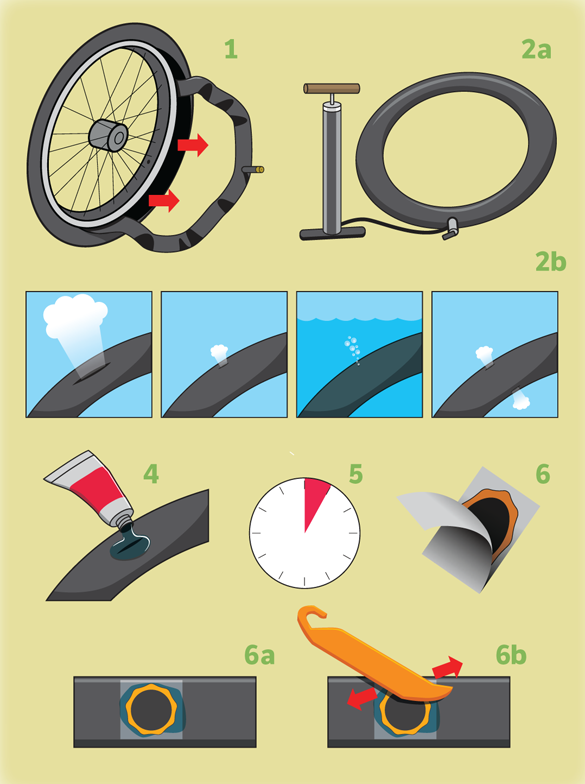 5
5
Tires Goodyear UltraGrip Ice SUV
Winter Drive protection
Tires Goodyear UltraGrip Performance+ SUV
All season Drive protection
Rating:
5
Tires Goodyear Vector 4Seasons Gen-3 SUV
Summer Drive Protection Run On Flat
Rating:
4
Tires Goodyear Wrangler HP All Weather
All season Drive protection
Rating:
4.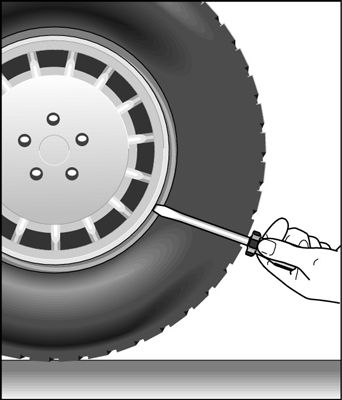 5
5
Tires Goodyear Vector 4Seasons
Summer
Rating:
4.5
Tires Goodyear Wrangler All-Terrain Adventure with Kevlar
Summer Drive protection
Rating:
4.5
Tires Goodyear EfficientGrip SUV
Summer Drive Protection Run On Flat
Rating:
4
Tires Goodyear Eagle F1 Asymmetric SUV
There are many reasons why a tire deflates.